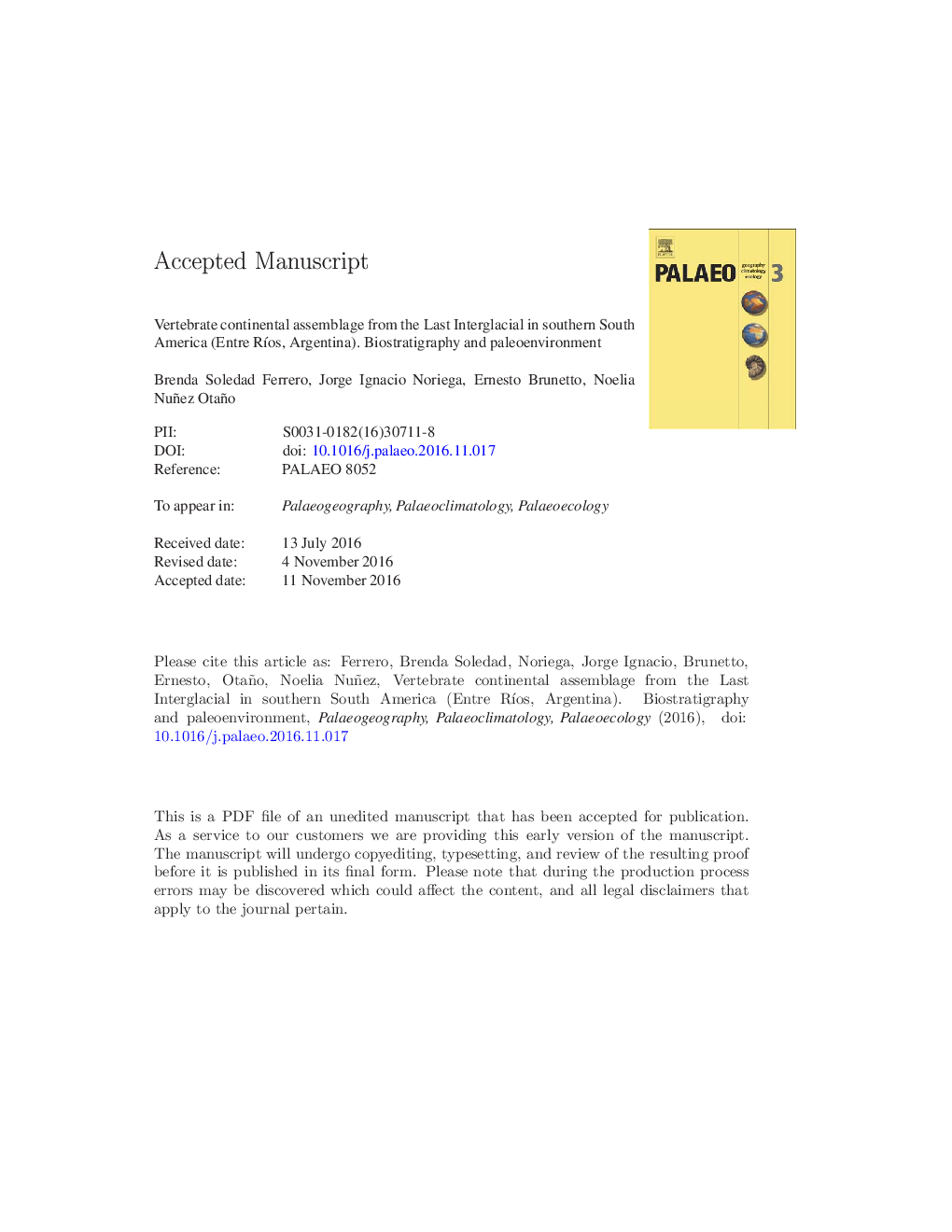| Article ID | Journal | Published Year | Pages | File Type |
|---|---|---|---|---|
| 5756021 | Palaeogeography, Palaeoclimatology, Palaeoecology | 2017 | 42 Pages |
Abstract
This contribution aims to analyse the best-known paleovertebrate records from the beginning of the Late Pleistocene in Salto Ander Egg Formation (SAEF), Argentina. This fossil assemblage allowed us to infer the paleoenvironmental conditions for these deposits, and to discuss the biostratigraphic record within a geochronological framework. Salto Ander Egg Formation (SAEF), mapped in southwestern Entre RÃos province, is composed of fluvial deposits and was dated with ages ranging from 120 to 60Â ky. Three sub-sequences were identified in the succession, which suggests a transgressive cycle over the MIS5 composed of a rising trend during MIS5e, a high stand stage in MIS5c, and a minor transgressive cycle during MIS3. A quantitative analysis has shown that approximately 50% of the total richness estimated for the unit has been sampled up to the moment. Two biostratigraphic units could be discriminated based on the study of faunistic associations. One of them, with Brazilian fauna, is linked to the basal sequences of SAEF (SS1). The other, exhibiting Pampean affinities, corresponds to middle and upper levels of SAEF (SS2-SS3).
Related Topics
Physical Sciences and Engineering
Earth and Planetary Sciences
Earth-Surface Processes
Authors
Brenda Soledad Ferrero, Jorge Ignacio Noriega, Ernesto Brunetto, Noelia Nuñez Otaño,
